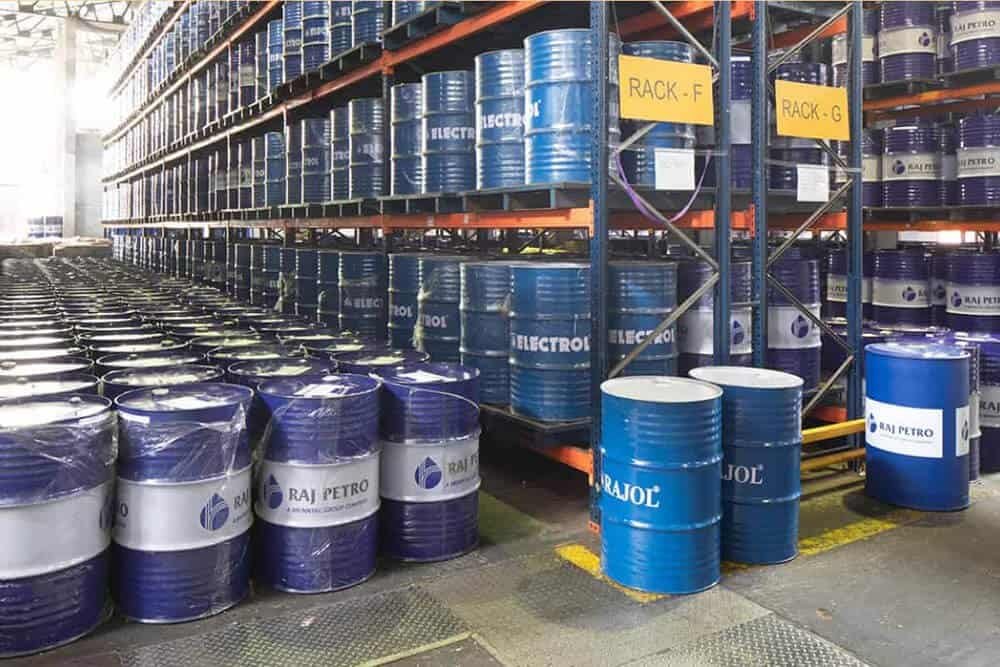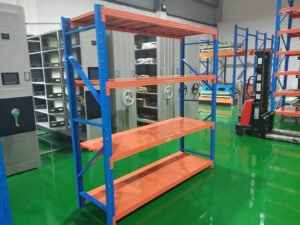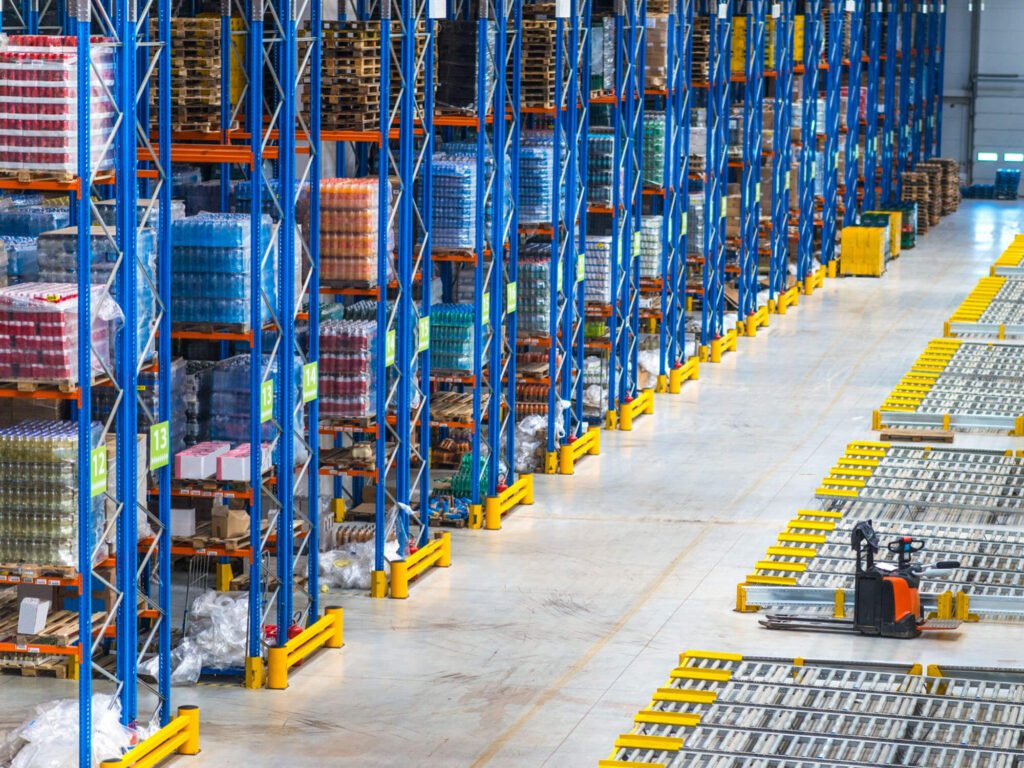Chemical industry logistics relies heavily on chemical storage warehouses. These facilities are responsible for storing, managing and defending thousands of chemicals used in industries like pharmaceuticals to manufacturing. To maintain the chemical storage warehouse operations, operating it demands strict following of safety protocol, regulatory compliance, and quick operation. The aim of this article is to guide you through chemical warehouse storage types, design considerations, requirements, challenges, and more. Keep reading to know the every unknown.
Chemical Storage Warehouses – Types
The warehouse can range from minimal to sophisticated depending on the type of chemicals it stores and the needs regarding handling of such chemicals. Here are some primary categories:
1. Single-Use Chemical Storage Facilities
The single use storage facilities for chemicals are confined to only single type of the chemicals. These chemicals includes flammable, pahrmaceuticals, as well as corrosive range.
Key Features:
- Tailored storage conditions that align with the properties of the specific chemicals stored.
- Enhanced safety measures designed to handle potential risks associated with a single type of chemical.
- Simplified inventory and management systems focused solely on a particular category, making organization more manageable.
Benefits:
- High level of safety and control over the chemical’s properties, ensuring that proper conditions are maintained.
- Streamlined operations, as managing a single type of chemical can reduce complexity in storage and handling.
2. Versatile Chemical Storage Facilities
These warehouses are adaptable and can store a variety of chemicals, making them ideal for companies with diverse storage needs.
Key Features:
- Modular racking systems and flexible layouts that support different storage requirements.
- You can store dynamic range of chemicals either reactive or corrosive or any other type at ease.
- Enhanced safety protocols suited for a variety of chemicals.
Benefits:
- Highly cost effective for those businesses who deals in multiple chemical types.
- Diverse businesses can easily tolerate with higher fluctuating chemcial requirements.
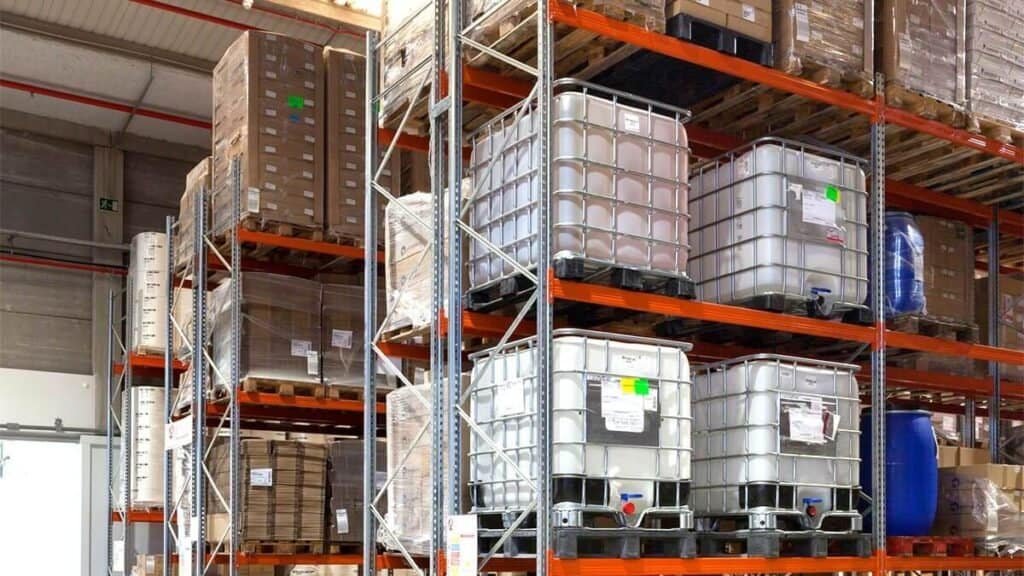
3. Outsourced Chemical Warehousing (3PL)
As the term reflects third party services store and manage your chemicals within warehouse. They do so for multiple businesses.
Key Features:
- Handing the management and storage to external parties or services help you stay focused on the core operations within the business.
- You get access to pro ones within field who have strong knowledge of the field.
Benefits:
- You don’t need to bear the operational burden by outsourcing the responsibilities to the third parties.
- This way you can experience lower overall cost for building up an additional storage facilities to handle operations.
- Third party personnels are truly capable to fulfill the industrial standards the right way
4. Temperature-Controlled Chemical Storage
These types of the storages are capable to maintain the temperature of the chemical within the certain range. This is beneficial for the chemicals that require freezing as well as pharmaceuticals chemicals.
Key Features:
- You can control the temperature within the specific range and thus enjoy proper chemical stability
- These warehouses are ideal for climate sensitive chemicals which change their composition
Benefits:
Maintain the chemical composition, stability, and effectiveness of the chemical appropriately
5. Hazardous Chemical Storage Facilities
The term hazardous refer to the faciliaties which deals in proper storage of the harmful chemicals. These chemicals includes explosives, high risk chemicals, and toxic substances.
Key Features:
- Key features of these vicinities includes fire proof structure, zero leakage, and fire suppression systems.
- Strictly complies with the environmental as well as safety standards.
Benefits:
- You can enjoy complete safety from those chemicals which possesses high end risk
- Using hazardous storages you can ensure prevention of the infrastructure, personnel belongings as well as environments.
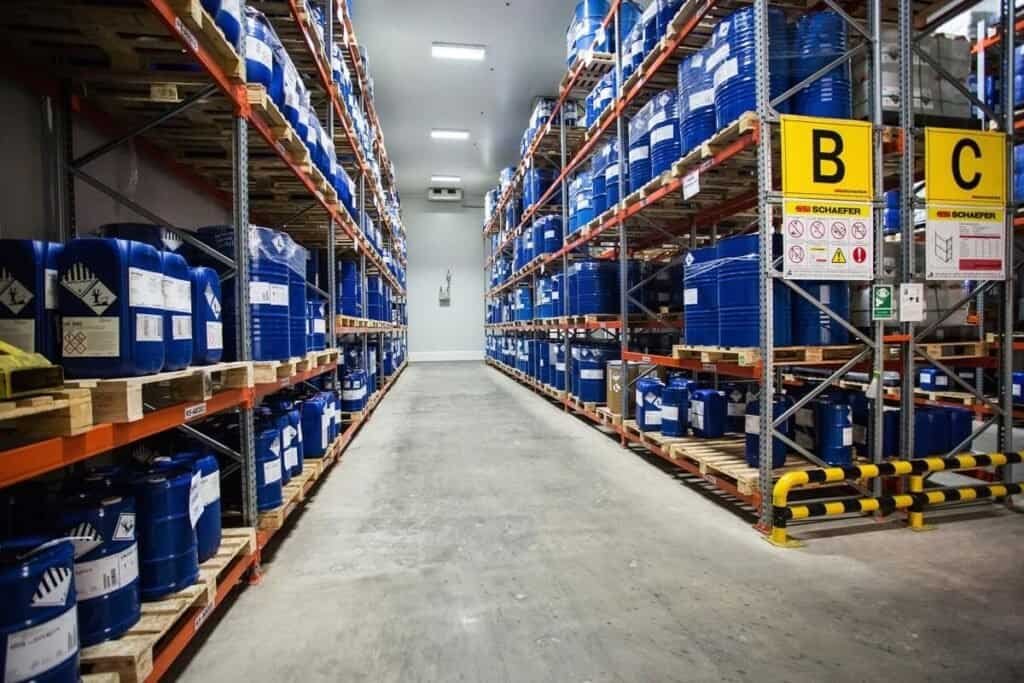
Chemical Storage Warehouse Key requirements
To operate a safe and compliant chemical storage warehouse, certain core requirements must be met:
Requirements under OSHA’s Hazard Communication Standard (HCS)
Clear communication is essential to help the HCS address chemical hazards. Identifying chemical hazards and providing proper handling instructions requires labels and Safety Data Sheets (SDS).
EPA Requirements
This is critical in compliance with the EPA regulations. In this protocol you need to ensure safe handling, storage as well as disposal of hazardous chemicals.
Safety Data Sheets and labeling
Clear labeling and easy access to SDS are important in effective chemical storage. It helps in identifying which chemicals are being put and knowing about the risk in handling them and it can help all the personnel to handle substances in a safe manner.
Hazard Communication and Employee Training
Managing chemicals properly requires employee training. Workers should be trained on how to handle harmful materials, having knowledge of safety protocols. They should also know how to respond to emergency situations.
Regular Audits and Compliance Checks are implemented.
Regular checking and auditing of the warehouse’s compliance with industry standards and government regulations can help in reducing the risk of occurrence of accidents and regulatory violations.
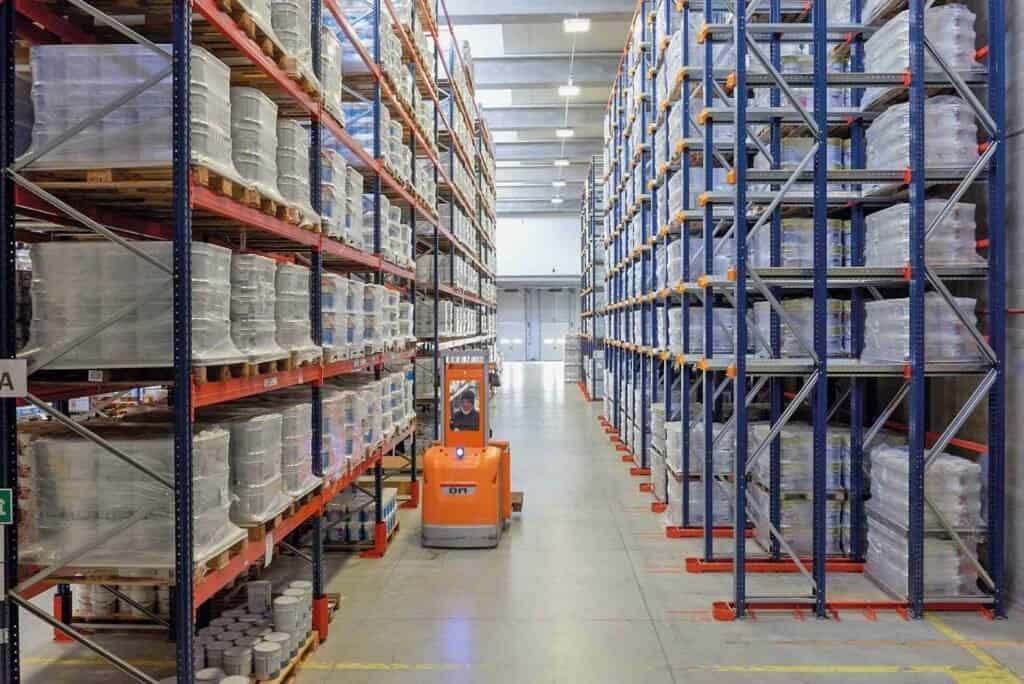
Chemical Storage Warehouse Design Considerations
This entails carefully planning chemical storage in warehouse design in order to ensure the safety of and efficiency in storing chemicals in a warehouse.
Spill Containment Systems
The prevention of hazardous leakage towards personnel or the environment is an absolute necessity in spill containment. Such measures of spill prevention and containment can limit the spread of hazardous materials.
Fire Protection Systems
Chemical storage facilities present a major risk of fire. Containing and extinguishing fires should use fire-resistant materials, suppression systems, and alarms to contain and extinguish up as quickly as possible to limit potential damage.
Ventilation and air quality control
Highly ventilated air systems are necessary to follow proper air quality, reducing the accumulation of toxic fumes. For flammable and toxic substances, which can emit harmful gases, this is especially important.
Temperature Control Mechanisms
Both temperature and humidity controlled environment is required for temperature sensitive chemicals. To maintain stable environments, especially in warehouses storing temperature sensitive materials, strategies such as cooling systems or insulated storage areas are employed.
Transportation and access control
Preventing accidental exposure to hazardous substances is possible by limiting the access to them to those who are authorized and using safe transport methods.
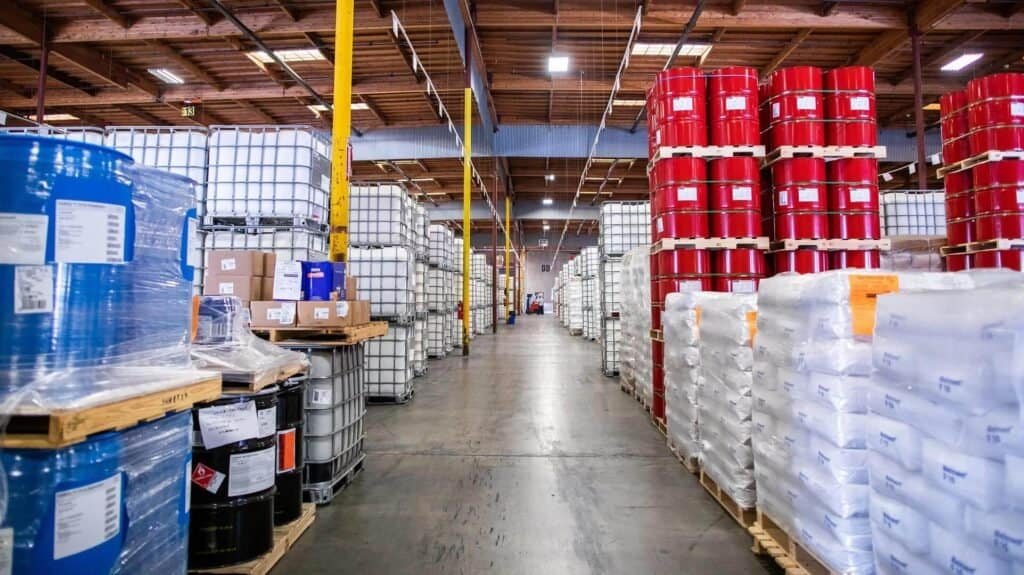
Chemical Storage Warehouse Layout: Best Practices
An optimised warehouse layout reduces risks while improving operational efficiency.
Zoning by Chemical Type and Hazard Level.
Sometimes different chemicals must be stored apart in order to prevent harmful reactions. Zoning helps in avoiding the cross contamination and maintaining safety for the incompatible materials.
Improving Traffic Flow and Movement.
Safety is achieved by reducing movement related risks like spills or collisions. It considers the movement pattern to avoid accidents in a well planned layout.
Spill Prevention and Cleanup Stations
Strategically placed spill kits and containment zones should be in easy reach for quick access during emergencies to contain spills and mitigate contamination risks.
Emergency Evacuation Routes Designing
Evacuation routes are clear and accessible in case of emergencies, allowing personnel to exit safely. Safety zones are regularly maintained and improve response time in incidents of critical events.
Layout Planning with Technology Integration
Technology is used in modern layout planning for the purpose of improving safety and efficiency by using tools such as automated inventory systems, sensors, and layout optimization software.
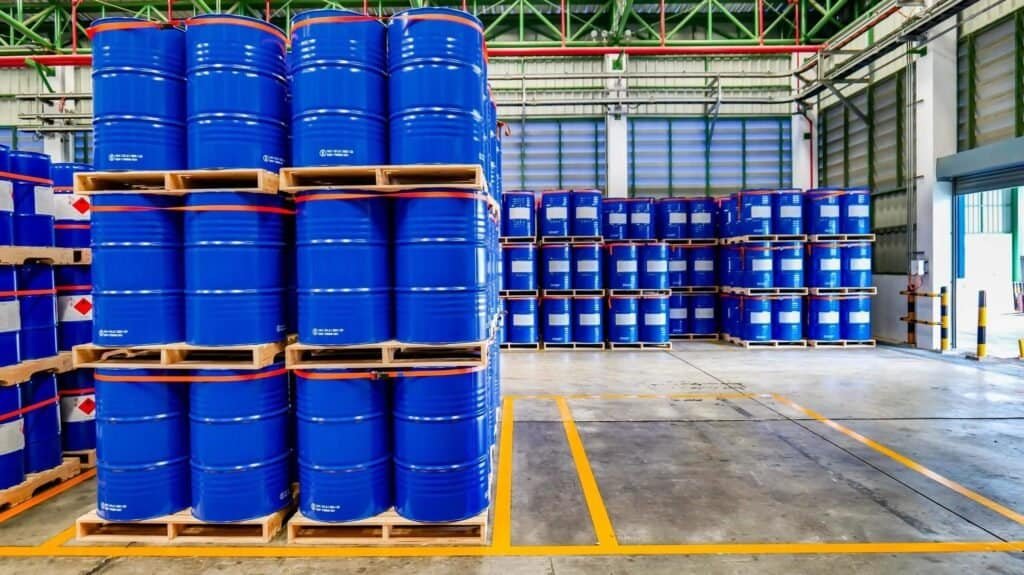
Safety Protocols and Compliance in Chemical Storage Warehouses
The chemical storage facility must follow strict safety protocols that safeguard them against the hazard.
Emergency Ready Plans
Such procedures are regularly updated to ensure fast response to critical events such as fire, spills, or other accidents.
Employee Training and Certification Programs.
It requires well-trained and certified employees in chemical handling. It trains them to engage in safe handling and minimise the risk of human error accidents.
Safety Drills and Incident Response on a regular basis.
Safety drills are routine. In chemical storage, response times must be quick.
Equipment Safety Checks and Maintenance
Operational safety involves regularly checking equipment such as storage units, ventilation and fire suppression systems.
Incident Documentation and Risk Assessment
Incidents can be documented and analyzed to identify potential safety gaps. Proactive safety measures can be undertaken with the support of regular risk assessments, which help to reduce the risk of future accidents.
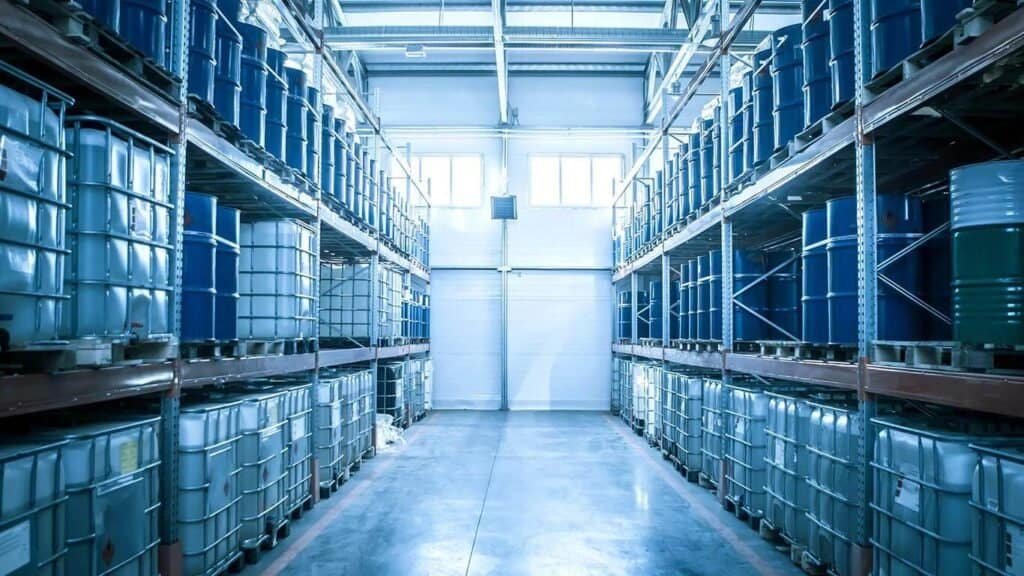
Chemical Storage Warehouses and Technology
Chemical warehousing has become safer and more efficient through the use of advanced technology.
Inventory Management Software
Inventory is managed accurately by software solutions, including tracking of chemicals and adherence to regulations. The handling of hazardous materials is improved with real-time tracking.
Handling and Storage Equipment
Robotic systems take on storage and retrieval work and reduce the risk of human error. This improves accuracy and decreases the possibility of accidental chemical handling.
Vigilante CCTV and Real-Time Monitoring Systems.
The surveillance systems watch out for any breach or absence of security. Further, they enable remote monitoring so that potential hazards can be identified early.
Gas Detection and Environmental Monitoring Systems
Air quality is detected, dangerous gases are found, and staff is alerted to take preventative measures. Important for warehouses that deals in flammable or toxic chemical substances.
Predictive Analysis
Predictive analysis helps you make use of data to predict maintenance requirements and hence reducing downtime as well as equipment failure. This helps with continuous compliance and operational feasibility.
Chemical Storage Warehousing Challenges
Handling a chemical storage warehouse is not an easy task and involves a lot of challenges that one has to handle properly.
Managing a Variety of Chemical Properties
There are different chemicals that have different storage requirements. Each chemical has to be stored appropriately and this diversity needs to be handled safely using strict protocols.
Documentation and Regulatory Compliance
It can be hard to stay compliant with frequent changes in regulations. This encourages companies to adhere to industry standards.
Cross Contamination Prevention
Severe consequences can result from cross contamination. Both segregation and containment prevent dangerous chemical interactions through proper storage practices.
Methods to Reduce the Cost of Safety
Safety investments can be expensive. A common challenge for warehouse operators is to find cost effective solutions without sacrificing safety.
Perishable and Reactive Chemicals Handling
Special handling is necessary for perishable and reactive chemicals. These substances must be maintained in stable condition under temperature control and constant monitoring.
Conclusion
Running a chemical storage warehouse is a complex balancing act of safety and compliance rules and regulations. No matter how you are storing from one chemical type of diverse array, following the best practices and regulatory guidelines will ensure the safe and efficient operations. Warehouse chemical storage do not have to be the way they used to be, since modern chemical warehouses employ advanced technology and thoughtful design to ensure a secure, yet reliable environment for chemical storage.

